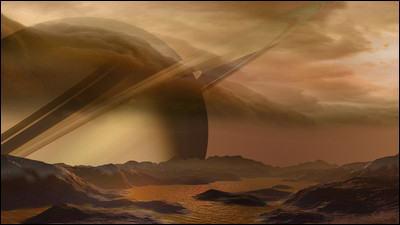What is the true identity of the 'magical island' floating on Saturn's moon 'Titan'?

The Fate of Simple Organics on Titan's Surface: A Theoretical Perspective - Yu - 2024 - Geophysical Research Letters - Wiley Online Library
https://agupubs.onlinelibrary.wiley.com/doi/10.1029/2023GL106156
Floating 'magic islands' on Saturn's moon Titan may be 'honeycomb' snows | Space
https://www.space.com/floating-magic-islands-saturn-moon-titan-swiss-cheese-snow

Titan is covered in a thick layer of methane gas, making it difficult to examine the planet's atmosphere in detail, making it a mysterious entity even within the solar system. In 2020, a team of NASA scientists discovered ``molecules that could be the origin of life'' in Titan's atmosphere, and in 2022, a team led by a planetary geologist from Stanford University discovered ``an Earth that should not exist in the first place.' ' A variety of research is underway, including developing hypotheses about ``sand dunes'' .
In 2014, the Saturn probe Cassini , developed by NASA and the European Space Agency (ESA) , observed that something huge appeared on the surface of Titan and was continuously changing. The island-like mass, observed as a bright spot moving in the orange haze surrounding Titan, is shrouded in mystery as to how it appears and why it disappears so easily, leading to it being called a 'magical island.' It is called.
The Cassini spacecraft records a mysterious 'evolution' on Saturn's sixth moon Titan - GIGAZINE

by Gray Lensman QX!
There are two main theories that have been proposed to explain the magical island floating on Titan. One theory is that islands are like illusions, and are merely observed like islands, but have no real existence. The other is the claim that the island is real, as observed.
Theories that the magical island is an illusion include claims that it is caused by waves in the moon's methane and ethane lakes, or by 'bubbly chains' associated with materials bubbling beneath these liquids. there is. In 2017, Daniel Cordier, a planetary scientist at the University of Reims-Champagne-Ardenne in France, published a paper on the flow of bubbles on Titan. The paper states that because Titan's surface is rich in methane and its depths are rich in ethane, winds and temperature differences can cause the mixture at the surface to flow downwards, and bubbles formed on the surface appear to be floating on Titan. After that, we believe that it will disperse as it sinks downward. Mr. Cordier argued that the bubbles had a high reflectance of radio waves, so they appeared bright in radar scans, so they were probably mistaken for bright magical islands.

On the other hand, Yu, a physical astronomer at the University of Texas at San Antonio, discovered that the magical island may not be an illusion but a real organic object. According to Yu's research, Titan's upper atmosphere is densely packed with organic molecules, which condense, freeze, and fall as snow on the moon's surface, methane lakes, and ethane lakes, creating a magical island. It is possible to think about it.
To test this hypothesis, the research team first investigated Titan's 'snow' made of organic molecules. As a result, it was concluded that this snow is not water that melts easily, but is composed of various organic molecules, so even if it falls on liquid methane or ethane, it will not melt immediately. The snow floats on the lake for a while, but eventually it solidifies and sinks, so we can observe the magical nature of islands that ``suddenly form and suddenly disappear''.
However, considering the materials observed on Titan so far, the surface tension of Titan's liquid regions, ethane and methane, is low, making it difficult to keep dense ice chunks floating for a while. Therefore, the research team proposes the hypothesis that snow masses made of organic molecules are ``porous like Swiss cheese''. Honeycombed snow is less dense, so it's more likely to remain suspended in the liquid for some time until methane or ethane seeps into the holes and tubes inside. This process, called

An important point in the research is the ``time it can stay afloat if it is organic'', which can be considered based on the size of the magical island observed. Based on the observed timescales, the research team claims, ``suggests that the idea of porous particles is the only plausible mechanism to explain the temporary floating-and-disappearing magical island phenomenon.'' doing.
Related Posts:
in Science, Posted by log1e_dh






